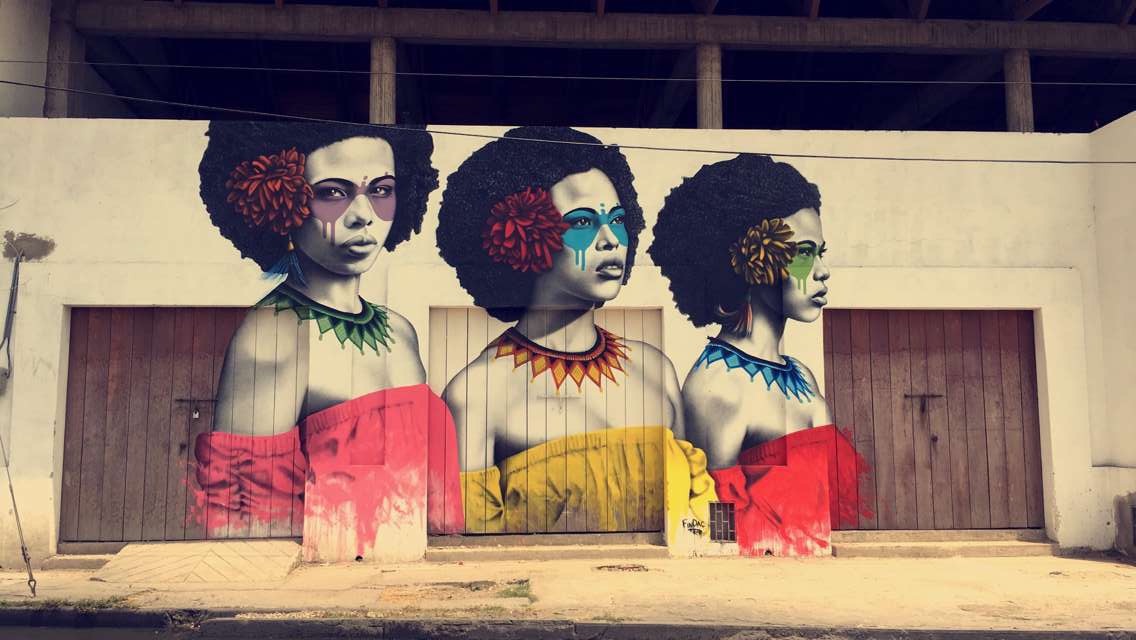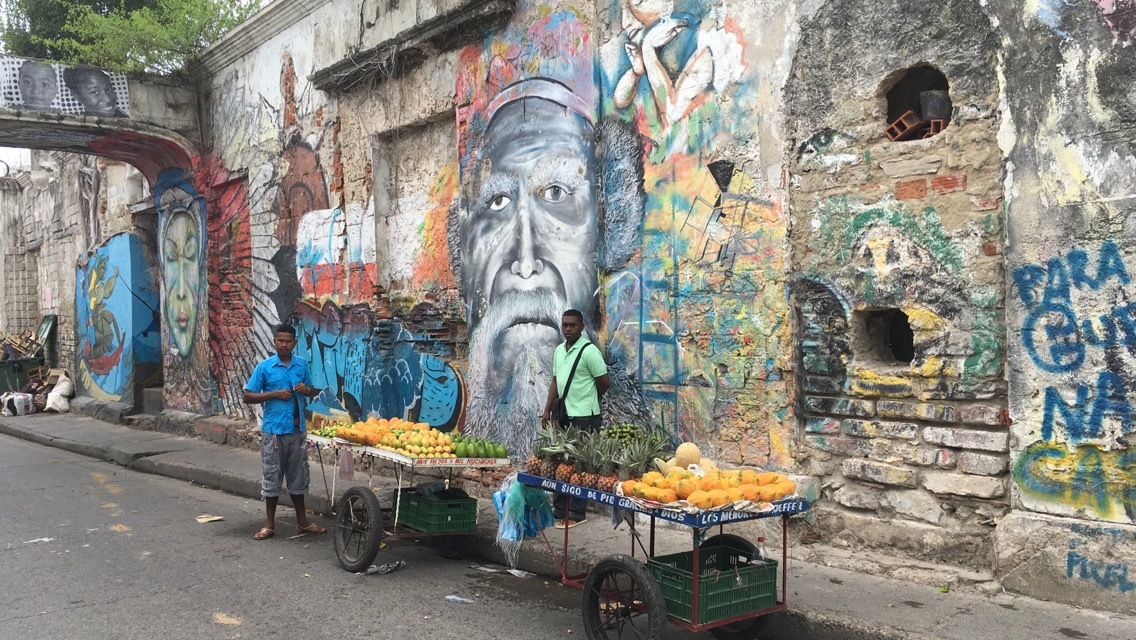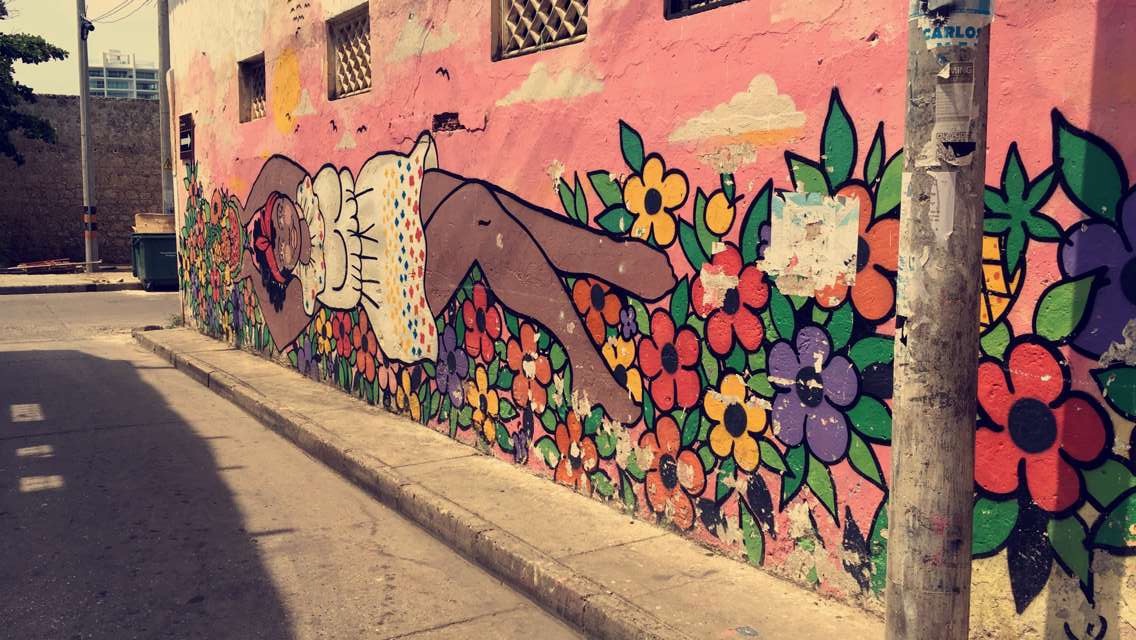We Are Everywhere: CARTAGENA
/
Street vendors busily organized their local trinkets, fruits and apparel.
Cliques of backpack-donned teenagers playfully walked the center of the stone streets.
Rustic sanguine shingles lined the centuries-old roof tops.
Couples held hands and kissed under oil-fired street lamps.
Horses rhythmically sashayed their way down the narrow brick streets.
Flamboyant flowers floated down from their lush balconies above.
The toasted smell of yeast sauntered through alleyways and mingled with the savory ocean air.




by Amanda Woolery
The city, though wearied by centuries, was flirtatious with color, movement, sound and smell. We were in the Walled City of Cartagena, Colombia. A city that boasted a bold history of gold, pirates and slaves.
We stood at the buzzing corner of Plaza Santo Domingo feeling coy alongside the voluptuous Figura Reclinada 92, when a man selling Colombian futbol jerseys excitedly approached us. He pressed his forearm against mine and exclaimed in his rolling Spanish accent, “My color! My color!”
I smiled as he began asking us where we were from. When we said, “Atlanta,” his enthusiasm quickly shifted into confusion. Through his Spanglish he explained that he thought that all of the black people in America were from New York City. We smiled proudly and told him, “We are everywhere.” He grinned before offering us a deal for a jersey.
This was one of countless times that we were approached by locals who were thrilled to see tourists of our skin tone visiting their country. Women with glazed smiles told me that my skin and hair were reminiscent of their grandmothers’ as their fingertips skated down my arm. Men aggressively patted Adam on his back, feeling an ancestral connection with his browned skin.
“We out here,” Adam said to me one afternoon. Eyes shifted their focus to us as we walked through the streets. People were either excited, dumbfounded or both, by two dark-skinned Americans drifting their way through their city.
We spent our days filling our senses with Caribbean-Latin influenced dishes. Fresh mango ceviche, deep fried red snapper, sizzling sweet gold and red plantains, cheese-filled hot breads and homemade cart-totted limeade were daily accoutrements. The grinning palenqueras donned in yellow, blue and red flowing dresses, lifted the balanced fruit baskets from their heads and gracefully diced dragon fruit, watermelon, mango, pineapple, papaya, passion fruit, and guava into small bowls. They concluded by planting plastic forks on top, like staking claim on new land. The everlasting breath and soul of the city pulsed in the click-clack-click-clack of the horses’ hooves and socialized with the swaying melody of the hip-winding cumbia music. The afro-innovative graffiti and street art of Getsemani beamed luminously on crumbling walls and found sanctuary in the intersections of the charmed neighborhood.
On our last day of exploring, we walked through the apricot-colored clock tower entrance of The Walled City as two kids began beatboxing alongside of us. One suddenly broke out into a harmonious, nimble Spanish freestyle rap. We two-step-bopped down the street as the kids freestyled for us and dapped us up at the end. Although we couldn’t understand them completely, we caught onto to a few phrases.
“Black and beautiful”
“Many tattoos”
“Biggie Smalls”
“Natural hair”
As we traveled within and outside of Cartagena we could see our history within the eyes of the locals. We felt a sense of thrilling pride to have traveled so far and to still find our siblings and grandparents within the hearts of the Colombians. Black people are in every corner of every country. In every village and every town, and we must travel to let our brothers and sisters know that in fact, we out here- we are everywhere.
Learn more about Amanda at APARTMENT 5C: http://www.apartment5c.com/














